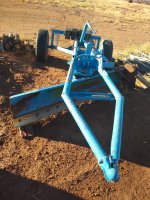PILOON
Super Star Member
To obtain a nice flat graded road you need a flat reference to work from otherwise every dip or bump will be magnified.
One sure way (you won't like it) is to drive backwards while 'grading' or spreading new gravel.
I have spread truckloads of gravel for great distances often to a desired , say, 3 inches of coverage.
Now if I wanted a super finish I often dragged my blade reversed at a moderate speed and you'd think it was a hand raked finish.
Hills are the worst as most drivers don't attack them properly.
They should accelerate B4 the hill and coast up but most tend to slow down and let the transmission shift down which then starts a small 'bump' which magnifies as more cars drive up resulting in washboards.
With an automatic tranny downshifting and accelerating B4 attacking a hill will greatly preserve the graded finish.
LOL, but then heavy rains will erase all your good grading skills.
One sure way (you won't like it) is to drive backwards while 'grading' or spreading new gravel.
I have spread truckloads of gravel for great distances often to a desired , say, 3 inches of coverage.
Now if I wanted a super finish I often dragged my blade reversed at a moderate speed and you'd think it was a hand raked finish.
Hills are the worst as most drivers don't attack them properly.
They should accelerate B4 the hill and coast up but most tend to slow down and let the transmission shift down which then starts a small 'bump' which magnifies as more cars drive up resulting in washboards.
With an automatic tranny downshifting and accelerating B4 attacking a hill will greatly preserve the graded finish.
LOL, but then heavy rains will erase all your good grading skills.
